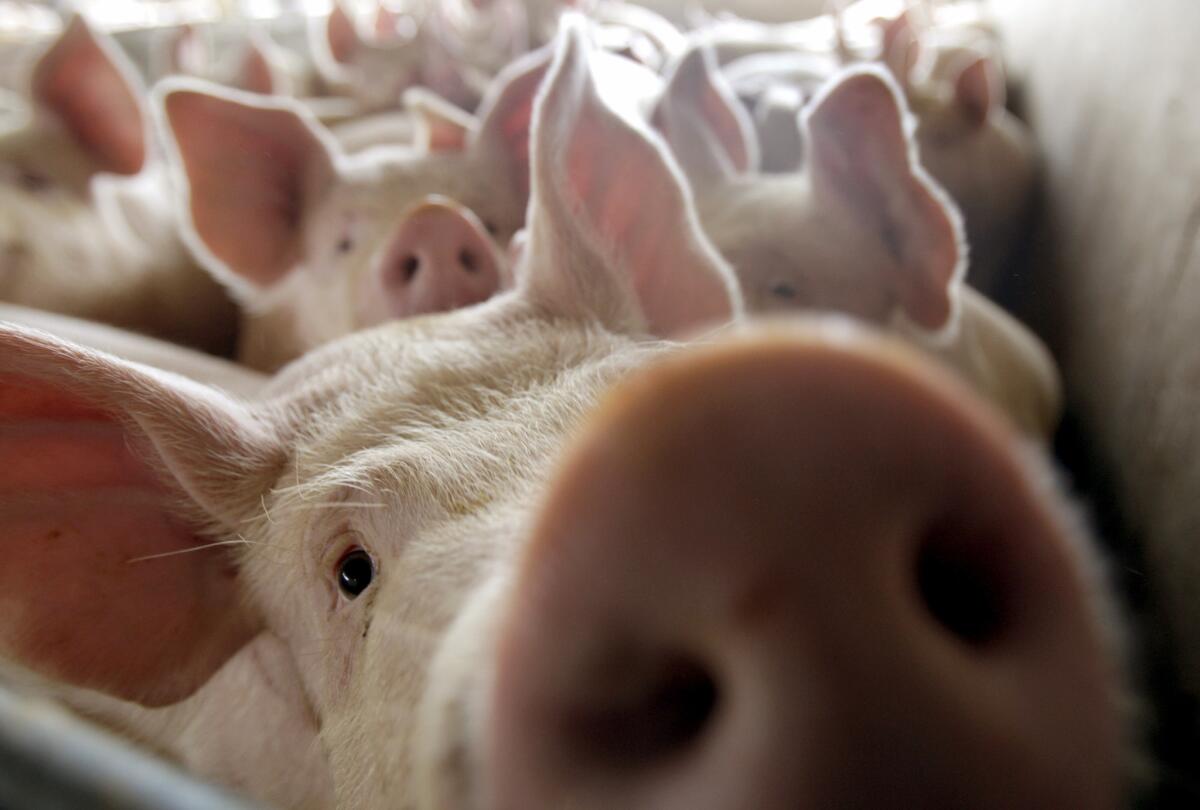Preserving antibiotics for people should be the goal

- Share via
Finally, meaningful new guidelines have been written to stem the overuse of antibiotics on livestock. On Wednesday, the Food and Drug Administration proposed new animal-husbandry practices that would phase out the routine use of medications such as tetracycline and penicillin on animals if the drugs are considered medically important for the treatment of disease in humans.
The lavish use of antibiotics among livestock operations — 80% of all antibiotics in the country are fed to food animals — has contributed to the rise of resistant infections that are difficult, expensive and sometimes impossible to treat. A September report by the Centers for Disease Control and Prevention revealed that resistant infections sicken 2 million Americans each year, killing 23,000 of them and adding $23 billion annually to the nation’s healthcare costs.
Many consumers aren’t aware that antibiotics are routinely added to feed to make cattle, pigs and other animals grow faster and to prevent disease from sweeping through crowded, unsanitary pens. The guidelines call for banning the use of medically important antibiotics as growth promoters and ending all over-the-counter sales; a veterinary prescription will be required. Animal farms could use these medications to prevent illness only in cases in which a veterinarian determines that the animals are at high risk of infection — for example, if a few animals have already fallen ill — and even then, use of the drugs is supposed to be limited to treating the animals at risk, not all the animals in a facility.
YEAR IN REVIEW: The good, the bad and the hopeful in wilderness news
The new guidelines are voluntary. We would rather they were law, but there is ample reason to think they will be widely followed. The two pharmaceutical companies that between them manufacture most of the affected veterinary antibiotics have signed on to the plan and have said they will change their labeling to reflect the guidelines. Existing laws barring off-label use of veterinary drugs would then make it virtually illegal to use them for growth. Trade groups for pork, chicken and beef producers also have come out in support. The agency has made it clear that if antibiotic use doesn’t drop, it will develop rules with teeth.
Congress has tried and failed for years to put some controls on antibiotic use in livestock. In the absence of federal law, the FDA has produced a useful template for keeping these crucial drugs effective for humans for as long as possible.
More to Read
A cure for the common opinion
Get thought-provoking perspectives with our weekly newsletter.
You may occasionally receive promotional content from the Los Angeles Times.








